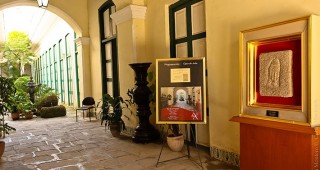Housed in a former colonial mansion built from 1806 to 1817, the Casa-Museo del Libertador Simón Bolívar is dedicated to honoring the “Great Liberator” who led the Latin American nations’ independence movement. It’s funded by the Venezuelan government, for whom native son Simón Bolívar (1783-1830) is the preeminent national hero. Bolívar stayed in this house during a visit to Cuba in March 1799.
The ground floor has detailed displays on his life and work, and there are also three art galleries with works by Cuban and international artists. The upper floor, with its splendid tinted-glass windows and curved iron and marble banister, has contemporary Venezuelan and Latin American paintings, sculptures and literature.
The house faces tiny Plaza de Bolívar, where a lifesize bronze statue of “El Libertador” stands atop a plinth beneath shade trees.
Opening hours: 9am-5pm Tues-Sat; 9am-1pm Sun



 $48 - $69
$48 - $69








